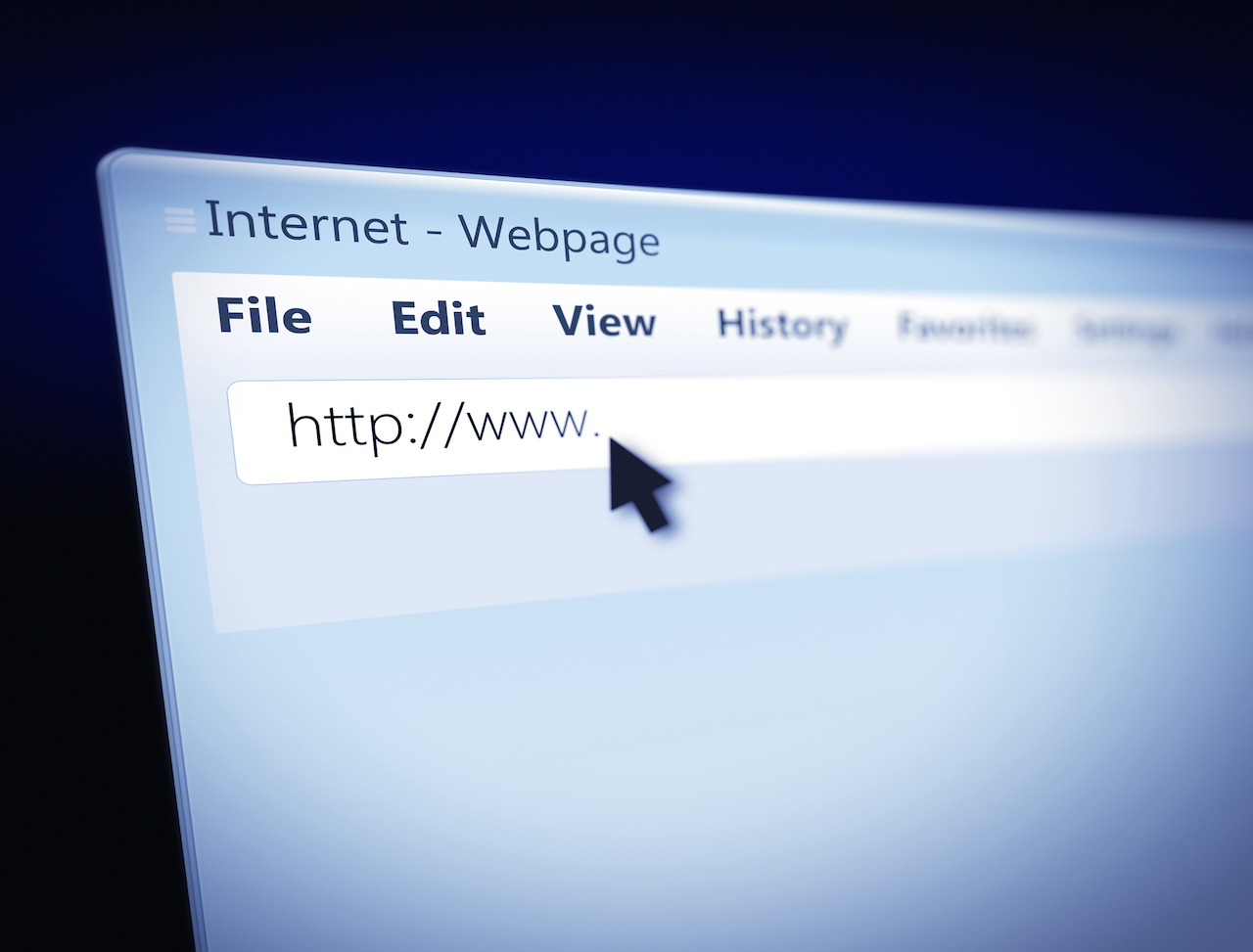Born Again in the Internet Age
Internet history timeline: ARPANET to the Www

In cyberspace history, credit for the initial concept that developed into the Globe Wide Web is typically given to Leonard Kleinrock. In 1961, he wrote nearly ARPANET, the predecessor of the internet, in a paper entitled "Information Flow in Large Advice Nets."
Co-ordinate to the journal Direction and Business Review (MBR), Kleinrock, forth with other innovators such every bit J.C.R. Licklider, the beginning director of the Information Processing Technology Office (IPTO), provided the backbone for the ubiquitous stream of emails, media, Facebook postings and tweets that are at present shared online every day.
The precursor to the cyberspace was jumpstarted in the early days of the history of computers , in 1969 with the U.Southward. Defense Department's Advanced Research Projects Agency Network (ARPANET), according to the journal American Scientist. ARPA-funded researchers adult many of the protocols used for internet communication today. This timeline offers a brief history of the net's development:
Internet timeline: 1960s
1965: Two computers at MIT Lincoln Lab communicate with one another using packet-switching technology.
1968: Beranek and Newman, Inc. (BBN) unveils the final version of the Interface Message Processor (IMP) specifications. BBN wins ARPANET contract.
1969: On Oct. 29, UCLA's Network Measurement Eye, Stanford Research Institute (SRI), University of California-Santa Barbara and University of Utah install nodes. The outset message is "LO," which was an attempt by educatee Charles Kline to "LOGIN" to the SRI computer from the university. However, the message was unable to be completed because the SRI arrangement crashed.

1970–1980
1972: BBN'south Ray Tomlinson introduces network email. The Internet Working Grouping (INWG) forms to address demand for establishing standard protocols.
1973: Global networking becomes a reality as the University College of London (England) and Imperial Radar Establishment (Norway) connect to ARPANET. The term internet is built-in.
1974: The first Internet Service Provider (ISP) is born with the introduction of a commercial version of ARPANET, known equally Telenet.
1974: Vinton Cerf and Bob Kahn (the duo said by many to be the Fathers of the Net) publish "A Protocol for Bundle Network Interconnection," which details the design of TCP.
1976: Queen Elizabeth Ii hits the "send button" on her beginning email.
1979: USENET forms to host news and give-and-take groups.
1980–1990
1981: The National Scientific discipline Foundation (NSF) provided a grant to constitute the Computer Science Network (CSNET) to provide networking services to university computer scientists.
1982: Manual Control Protocol (TCP) and Cyberspace Protocol (IP), as the protocol suite, commonly known as TCP/IP, emerge as the protocol for ARPANET. This results in the fledgling definition of the internet as connected TCP/IP internets. TCP/IP remains the standard protocol for the net.
1983: The Domain Name System (DNS) establishes the familiar .edu, .gov, .com, .mil, .org, .net, and .int system for naming websites. This is easier to retrieve than the previous designation for websites, such equally 123.456.789.x.
1984: William Gibson, author of "Neuromancer," is the first to use the term "cyberspace."
1985: Symbolics.com, the website for Symbolics Figurer Corp. in Massachusetts, becomes the first registered domain.
1986: The National Science Foundation's NSFNET goes online to connected supercomputer centers at 56,000 bits per 2nd — the speed of a typical dial-up reckoner modem. Over fourth dimension the network speeds up and regional research and education networks, supported in part by NSF, are connected to the NSFNET backbone — effectively expanding the Internet throughout the United States. The NSFNET was essentially a network of networks that connected academic users along with the ARPANET.
1987: The number of hosts on the internet exceeds xx,000. Cisco ships its first router.
1989: World.std.com becomes the first commercial provider of dial-upwards access to the internet.

1990–2000
1990: Tim Berners-Lee, a scientist at CERN, the European Arrangement for Nuclear Research, develops HyperText Markup Language (HTML). This technology continues to have a large impact on how we navigate and view the internet today.
1991: CERN introduces the World Wide Web to the public.
1992: The first audio and video are distributed over the internet. The phrase "surfing the internet" is popularized.
1993: The number of websites reaches 600 and the White House and United Nations go online. Marc Andreesen develops the Mosaic Web browser at the University of Illinois, Champaign-Urbana. The number of computers connected to NSFNET grows from two,000 in 1985 to more 2 meg in 1993. The National Scientific discipline Foundation leads an effort to outline a new internet architecture that would support the burgeoning commercial utilize of the network.
1994: Netscape Communications is born. Microsoft creates a Spider web browser for Windows 95.
1994: Yahoo! is created by Jerry Yang and David Filo, two electrical engineering graduate students at Stanford Academy. The site was originally called "Jerry and David's Guide to the World Wide Web." The company was later incorporated in March 1995.
1995: Compuserve, America Online and Prodigy begin to provide internet access. Amazon.com, Craigslist and eBay get live. The original NSFNET backbone is decommissioned as the net's transformation to a commercial enterprise is largely completed.
1995: The first online dating site, Lucifer.com, launches.
1996: The browser war, primarily between the two major players Microsoft and Netscape, heats up. CNET buys boob tube.com for $fifteen,000.
1996: A 3D blitheness dubbed "The Dancing Babe" becomes ane of the showtime viral videos.
1997: Netflix is founded by Reed Hastings and Marc Randolph equally a company that sends users DVDs past mail.

1997: PC makers can remove or hibernate Microsoft's internet software on new versions of Windows 95, thank you to a settlement with the Justice Department. Netscape announces that its browser volition exist free.
1998: The Google search engine is built-in, changing the manner users engage with the internet.
1998: The Net Protocol version vi introduced, to let for futurity growth of Internet Addresses. The current most widely used protocol is version 4. IPv4 uses 32-scrap addresses allowing for 4.3 billion unique addresses; IPv6, with 128-bit addresses, will allow 3.iv x 1038 unique addresses, or 340 trillion trillion trillion.
1999: AOL buys Netscape. Peer-to-peer file sharing becomes a reality as Napster arrives on the Internet, much to the displeasure of the music industry.
2000–2010
2000: The dot-com bubble bursts. Websites such as Yahoo! and eBay are hitting by a large-scale denial of service attack, highlighting the vulnerability of the Internet. AOL merges with Time Warner
2001: A federal guess shuts down Napster, ruling that it must detect a manner to stop users from sharing copyrighted material before information technology tin can go back online.
2003: The SQL Slammer worm spread worldwide in just 10 minutes. Myspace, Skype and the Safari Web browser debut.
2003: The weblog publishing platform WordPress is launched.
2004: Facebook goes online and the era of social networking begins. Mozilla unveils the Mozilla Firefox browser.
2005: YouTube.com launches. The social news site Reddit is too founded.
2006: AOL changes its business model, offering most services for free and relying on advertizing to generate revenue. The Internet Governance Forum meets for the start time.
2006: Twitter launches. The visitor's founder, Jack Dorsey, sends out the very first tweet: "just setting upwardly my twttr."
2009: The net marks its 40th ceremony.
2010–2020
2010: Facebook reaches 400 one thousand thousand active users.
2010: The social media sites Pinterest and Instagram are launched.
2011: Twitter and Facebook play a large role in the Eye East revolts.
2012: President Barack Obama's assistants announces its opposition to major parts of the Stop Online Piracy Human activity and the Protect Intellectual Property Act, which would have enacted broad new rules requiring internet service providers to law copyrighted content. The successful push to stop the pecker, involving applied science companies such as Google and nonprofit organizations including Wikipedia and the Electronic Frontier Foundation, is considered a victory for sites such as YouTube that depend on user-generated content, as well equally "off-white use" on the internet.
2013: Edward Snowden, a former CIA employee and National Security Bureau (NSA) contractor, reveals that the NSA had in place a monitoring program capable of borer the communications of thousands of people, including U.S. citizens.
2013: Fifty-one percent of U.S. adults report that they banking concern online, according to a survey conducted by the Pew Enquiry Eye.

2015: Instagram, the photograph-sharing site, reaches 400 million users, outpacing Twitter, which would keep to achieve 316 million users by the center of the same year.
2016: Google unveils Google Assistant, a vox-activated personal assistant program, marking the entry of the internet behemothic into the "smart" computerized banana marketplace. Google joins Amazon'due south Alexa, Siri from Apple, and Cortana from Microsoft.
2018: There is a pregnant ascent in cyberspace-enabled devices. An increase in the Internet of Things (IoT) sees effectually seven billion devices by the end of the year.
2019: Fifth–generation (5G) networks are launched, enabling speedier internet connection on some wireless devices.
2020–2022
2021: By Jan 2021, there are 4.66 billion people connected to the internet. This is more one-half of the global population.
2022: Low–Earth orbit satellite internet is closer to reality. By early Jan 2022, SpaceX launches more than 1,900 Starlink satellites overall. The constellation is now providing broadband service in select areas around the earth.
Additional resources
To find out more than about the SpaceX satellite cyberspace project, you tin can lookout this video about the mission. Additionally, to read an interview with Leonard Kleinrock, visit the Communications of the ACM website.
Bibliography
- "Leonard Kleinrock Net Pioneer". Direction and Business Review (2022).
- "The Science of Computing: The ARPANET after Twenty Years". American Scientist (1989).
- "A brief history of the internet". Association for Computing Machinery (AGM) (2009).
- "Internet Protocol, Version 6 (IPv6) Specification". S. Deering, R. Hinden (1998).
- "Distributed denial of service attacks". IEEE International Briefing on Systems, Man and Cybernetics (2000).
- "Statistics and Social Network of YouTube Videos". 2008 16th Interntional Workshop on Quality of Service (2008).
- "Social Media and Crisis Communication". (Routledge, 2017).
Source: https://www.livescience.com/20727-internet-history.html
0 Response to "Born Again in the Internet Age"
Post a Comment